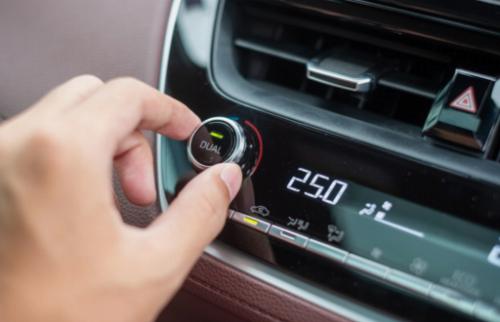The Importance of Windscreen Repair Kits in Maintaining Your Vehicle
22 December 2025 by Jack L.The windscreen of a vehicle plays a crucial role in ensuring the safety of the driver and passengers on the road. Over time, wear and tear, as well as external factors, can lead to damages that may compromise the integrity of the windscreen. In such cases, it is important to address these issues promptly to maintain the safety and functionality of the vehicle. Windscreen repair kits are a convenient solution that allows for quick fixes to minor damages, but understanding when to use them versus seeking professional services is essential. In this article, we will explore the importance of windscreen repair kits in maintaining your vehicle and the key aspects to consider when addressing windscreen damages.

Understanding the Role of Windscreen in Vehicle Safety
The windscreen plays a crucial role in ensuring the safety of a vehicle and its occupants. It serves as a barrier against road debris, weather elements, and even insects that can obstruct the driver's view and cause accidents. A clear and intact windscreen is essential for visibility and allows the driver to have a clear line of sight, helping to prevent collisions and ensure safe driving conditions. In the event of a collision, the windscreen also provides structural support to the vehicle, helping to prevent the roof from collapsing and protecting the occupants inside. Thus, maintaining the integrity of the windscreen is imperative for vehicle safety.Signs That Your Windscreen Needs Repair
It is important to know the signs that indicate your windscreen needs repair in order to protect yourself and others on the road. One obvious sign that your windscreen needs repair is if you notice a crack or chip in the glass. Even small cracks or chips can compromise the structural integrity of the windscreen and make it more susceptible to further damage. Another sign that your windscreen needs repair is if you notice any distortion or discoloration in the glass. This can be a sign of delamination, which is the separation of the layers of glass in the windscreen. Delamination can weaken the glass and make it more prone to shattering. If you hear a whistling or buzzing noise when driving at high speeds, it could be a sign that there is a leak in the windscreen seal. This can allow water to seep into the car, causing damage to the interior and creating a potential safety hazard. Lastly, if you notice that your windscreen wipers are leaving streaks or skipping across the glass, it could indicate that there is a problem with the windscreen itself. This can be a sign that the glass is not smooth and clean, which can affect visibility while driving. It is important to address these signs promptly and seek professional repair services to ensure the safety and integrity of your vehicle's windscreen. Ignoring these signs can lead to further damage and potentially put your safety at risk.DIY Windscreen Repair Kits Versus Professional Services
When it comes to repairing your windscreen, you have the option of using DIY repair kits or seeking professional services. Both options have their own advantages and disadvantages, so it is important to weigh them carefully before making a decision. DIY repair kits are typically more affordable and convenient, as they can be purchased at most auto parts stores and used at home. They are designed for small cracks and chips, and can be effective in preventing further damage. However, they may not always provide a permanent solution, especially for larger or more complex damage. On the other hand, professional services offer the expertise and equipment needed to accurately assess and repair your windscreen. They can provide a more thorough and long-lasting solution, ensuring the safety and integrity of your vehicle. However, professional services can be more expensive and time-consuming, as they require a visit to a specialized repair shop. Ultimately, the decision between DIY repair kits and professional services depends on the extent of the damage to your windscreen and your budget. If you have a small crack or chip that needs immediate attention, a DIY repair kit may be sufficient. However, if the damage is extensive or if you want a more permanent solution, it is best to seek the help of a professional.Components of a Windscreen Repair Kit
Windscreen repair kits typically include the following components:1. Resin applicator: This tool is used to apply the resin to the damaged area of the windscreen.
2. Resin: The resin is the material that fills in the cracks or chips in the windscreen to restore its strength and integrity.
3. Curing strips: These strips are used to cover the resin after it has been applied to the damaged area, helping it to cure and harden.
4. Razor blade: A razor blade or similar tool may be included in the kit to remove excess resin and ensure a smooth finish.
5. Drill bit: Some repair kits may include a drill bit for larger chips or cracks that require drilling to create a clean surface for the resin to bond to.
6. Cleaning cloth: A cleaning cloth or wipes may be provided to ensure the windscreen is clean and free of any debris before beginning the repair process.
7. Instructions: Most windscreen repair kits come with detailed instructions on how to use the components effectively to repair the damage.
8. Gloves: Some kits may also include gloves to protect your hands while handling the resin and other materials. These components work together to provide a cost-effective and convenient solution for repairing minor windscreen damage before it worsens and requires a complete replacement.